WORLD CLASS COACHING
Winning With Inverted Fullbacks - Defending
By Luca Bertolini
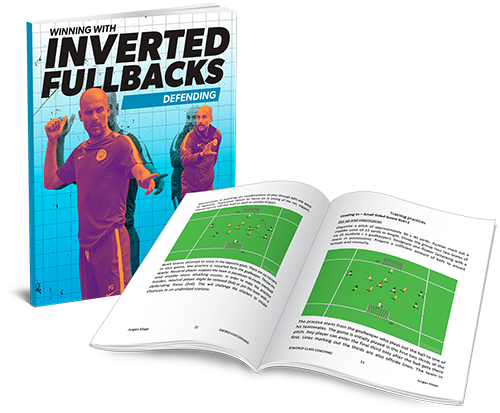
Table of Contents
PART ONE
GENERAL OBSERVATIONS
PATTERN OF PLAY
PART TWO
PREVENT COUNTER-ATTACKS
DEFEND THE BUILD UP
PART THREE
HIGH PRESSURE AND COUNTER PRESSING
DRILLS AND EXERCISES
PART FOUR
DRILLS AND EXERCISES
General Observations and Patterns of Play
Even if inverted fullbacks have been mainly been used to counteract the trend of the inverted wingers thanks to their defensive capacity, their attacking role has increases also.
In recent seasons, inverted wingers posed many problems to the opposition.
An inverted winger (someone who plays on the opposite side toward the center and toward the side of their preferred foot) often creates problems for conventional fullbacks, who are forced to defend on their weaker side, while it also drags them inside, leaving space out wide.
If we think about the inverted fullbacks from a defensive point of view, we find that they can mark the wingers that like to cut inside to be involved in the game.
This is right if the winger is playing as inverted player and if the fullback is playing on the opposite side related to his foot: right-footed winger on the left and left-footed fullback on the right and left-footed winger on the right and right footed fullback on the left.

This could be the first benefit, as the fullbacks are able to oppose and to put pressure against the winger on their strong foot, while they are trying to dribble inside the field.

If we think about the position on the field of the inverted fullbacks, regardless of their strong feet, we may find that this way are they often effective in nullifying the inverted or false wingers, directing them down the sideline, as the center of the space to be defended is already occupied.


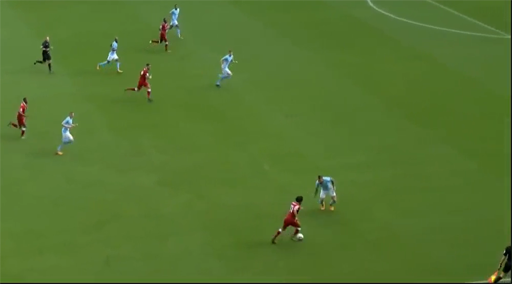
In this defensive situation, Otamendi is covering the center space, preventing Liverpool's inverted winger Salah from dribbling inside the center of the final third and directing him toward the sideline.

Salah is forced to play with his weak right foot along the flank and he loses the possession in the end.
If we still think about the inverted fullback as an inverted-foot player, an issue for him could be created by the traditional wingers, as those players often dribble the ball along the flank with the strong foot and then they try to send cross passes toward the penalty area.
In this situation the fullback is forced to defend with the weaker foot. Chelsea's defender is César Azpilicueta; when he plays as a right-footed left fullback, he is often forced to defend with his left foot and the traditional wingers may over come him on the outside.

An issue related to the position of the modern inverted fullback, is the risk of overlapping runs for the players in front of them if their teammates lose possession in the middle third.

This can pose problems when defending as the opposition can double up the mark against the winger playing in front of the inverted fullback.

This move is very similar to the previous one, but Otamendi is on late when he covers the space and Salah is able to overlap behind him. If the opposition wingers are inclined to play near the sideline, the inverted fullbacks are forced to defend on their weaker foot and they may leave free spaces on the flanks.
And here Salah is able to counter attack on the flank even if he is outnumbered.
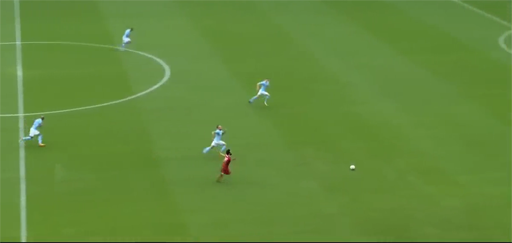
We may then say that the inverted fullback is more efficient when the opposition team has players who like dribbling and running inside the field, as those kind of moves are already and easily protected.
Pep Guardiola's Manchester City plays with interesting ideas on how to fix these issues:
• The fullbacks move into the middle of the pitch whenever City has the possession

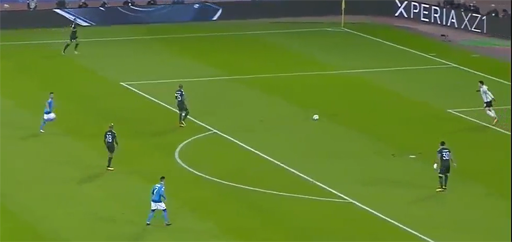
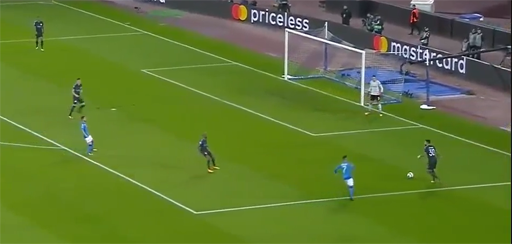
In this move Fernandinho drops back, even if the center back is in position to ensure numerical advantage 4 v 2, and to help the inverted fullback to play out.

• The wingers push high up on the flanks to provide width


• The midfielders drop in between the two center backs to form a solid base of three defenders

The inverted fullbacks are able to man-mark the opposition's forwards moving inside during the previous building up phase,

and this placement of the formation reduces the risk of being caught out on the counter attacks, when they are on time, as we saw before.
If the inverted fullback is on late, and he can't mark the opponents while he's on the ball, the role of the balance midfielder becomes very important, as he provides the coverage of the free spaces on the flanks.

Moreover, if the wingers are able to play as high up the pitch as possible, forcing the opposition's fullbacks towards their own goal, they can prevent them from leaving their defensive positions.

In this move, De Bruyne is on the ball as center forward (he can be placed in that position, thanks to the balance center midfielder near the defense line) and Sterling is placed very wide on the right. All the opposition's midfielders are on late here.
The opposition left winger of the 1-4-3-3 formation of the opponent must run back from the final third to mark him on, as we are going to see in the next pages.
In this second example, Leroy Sanè is on the ball on the left; De Bruyne and Gundogan are placed very high on the same line of the forwards.
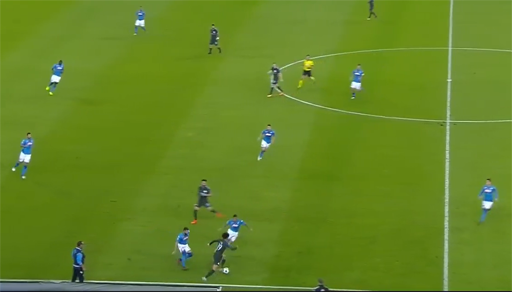
The right fullback and the right midfielder of the 1-4-3-3 opposition's formation are marking him.
This way 3 players are quite free on the weak side and counter attacks are again probably avoided, as only the center forward of the opposition is still high on the field; all the others are placed behind the ball line.
The risk of counter attacks should be avoided also because the opposition wingers are supposed to double mark the wide forwards, as Napoli's Insigne is doing against Sterling, trying to help his teammate, the left back Ghoulam.
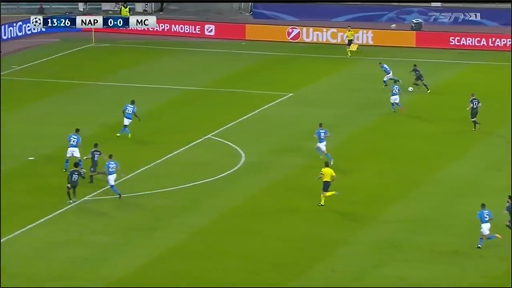
Even if the possession can be recovered, it's very hard to counter attack, as only the center forward is again still placed high on the field.
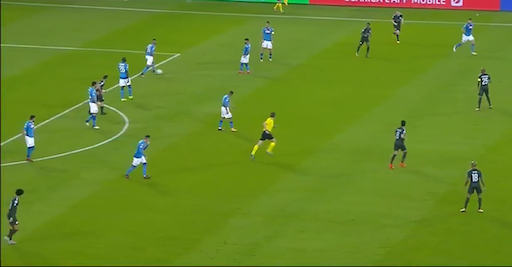
The opposition midfielders are then supposed to mark the inverted fullbacks in the middle third during the building up phases of play.
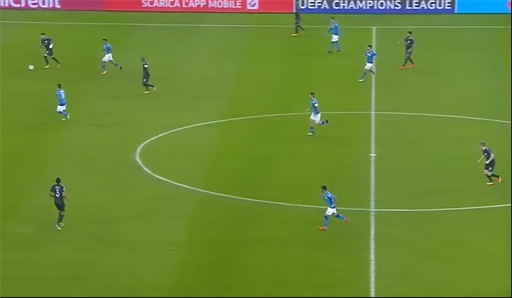
In this first example, Allan, the right midfielder, is pressing Otamendi, closing the center spaces and the passing line toward the balance midfielder Fernandinho.
Danilo, the other fullback, is placed inside the right area of the middle third; if he had the possession, Hamsik and Insigne, the left midfielder and the left winger of the oppositions would have to try to put pressure against him.
De Bruyne and Gundogan are again placed between the opposition lines; if the passing lanes are not covered properly, they could receive, turn, and play freely toward the opposition goal.
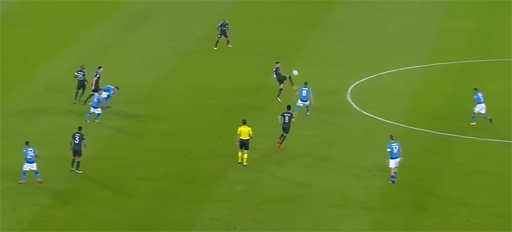
In this second example, Otamendi is on the ball again inside the center area of the middle third and he's under the pressure of the playmaker of Napoli, Jorginho, who had to run toward him to avoid a forward pass. The other two midfielders, Hamsik and Allan would be probably on late against the opponents.
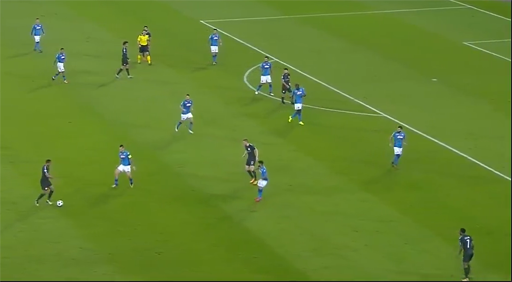
Here again, Danilo is on the ball, while he is playing very closed to the final third, and Hamsik must press him to avoid forward passes toward De Bruyne, who could dribble toward the penalty area and shoot on goal.
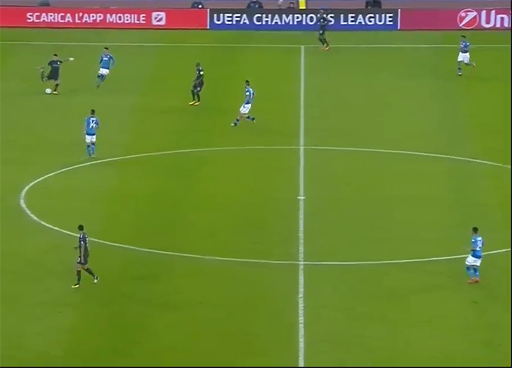
This last example is quite different from all the others; the right winger Calleon is placed very close to the inverted fullback and the right midfielder of the three is replacing his position on the flank to try to stay balanced.
But a clear space is available at the back of the left midfielder who has ran toward the center to equalize the number of players near the ball.


